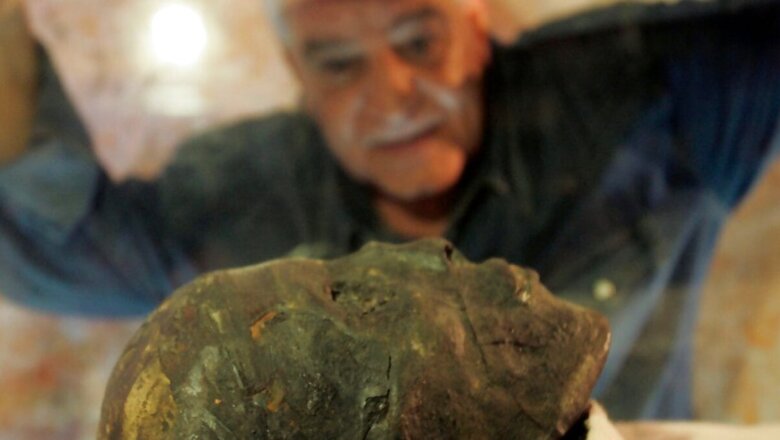
views
A scientist claims to have solved the infamous curse of King Tutankhamun’s tomb in Egypt which has been linked to the mysterious deaths of multiple of the excavators who discovered it in 1922. Ross Fellowes wrote in the Journal of Scientific Exploration (JSE) last month that toxic levels of radiation from uranium and poisonous waste may have emanated from the tomb.
The tomb, sealed over 3,000 years, emits radiation so high that people who come in contact would very likely develop a fatal dose of radiation sickness and cancer, according to the study accessed by the New York Post.
Fellowes’ work, published more than 100 years later, says that radioactivity is not limited to King Tutankhamun’s tomb.
“Both contemporary and ancient Egypt populations are characterised by unusually high incidences of hematopoietic cancers, of bone/blood/lymph, for which a primary known cause is radiation exposure,” Fellowes wrote in his study.
He also said that “unusually high radiation levels have been documented in Old Kingdom tomb ruins” and are spread throughout sites in Egypt. “Radiation has been detected by the Geiger counter at two sites at Giza adjacent to the pyramids,” he writes. He also said that radon, a radioactive gas, has been detected in “several underground tombs at Saqqara”. The readings were “intensely radioactive”.
“Modern studies confirm very high levels of radiation in ancient Egyptian tombs, in the order of 10x accepted safety standards,” the study explains. The study also theorized that the builders of these ancient tombs knew of the toxins based on the warning messages carved on the walls.
“The nature of the curse was explicitly inscribed on some tombs,” he writes. He gives the example of a tomb whose writing translates precisely to: “Those that break this tomb shall meet death by a disease that no doctor can diagnose”.
Fear of supernatural curses linger in these ancient ruins and have fascinated those interested in pyramids, pharaohs and Egypt.
Fears of supernatural curses intensified when Lord Carnarvon died mysteriously. Lord Carnarvon funded the 1922 excavation and saw the treasure-filled rooms after diggers unsealed the tomb.
“Carnarvon was dead within a few weeks of the uncertain diagnosis of blood poisoning and pneumonia,” Fellowes wrote.
Egyptologist Arthur Weigall allegedly told his colleagues that Carnarvon would die within six weeks upon entering the tomb, the study claimed.
Howard Carter was the first person to take a walk inside Tutankhamun’s tomb with Carnarvon. He died in 1939 after a long battle with Hodgkin’s lymphoma which was suspected to have affected him due to radiation poisoning.
British Egyptologist and independent excavator Arthur Weigall, known to have started the ‘myth’ of the curse, was present during the unsealing of the tomb and also died of cancer at 54 years old in 1934.
Six out of 26 people present during the unsealing of the tomb died within a decade from asphyxia, stroke, diabetes, heart failure, pneumonia, poisoning, malaria and X-ray exposure, the New York Post said citing the study.
There were some strange events also that occurred during the unsealing of the tomb leading many to see the deaths as odd. Carnarvon reportedly suffered a mosquito bite that became severely infected.
Cairo also suffered a bizarre power outage and a major sandstorm when excavators opened the tomb, a report by National Geographic. Carnarvon’s favourite dog also suddenly dropped dead after allegedly letting out a chilling howl.
The discovery of the tomb helped people understand how the ancient Egyptian monarch bid farewell to those dead and also helped Egyptology emerge as a study. Five thousand items, including solid gold funeral shoes, statues, games, and strange animals, were discovered inside Tutankhamun’s tombs.
Excavators took almost a decade to clear the tomb of its treasure. Tutankhamun, an ancient Egyptian pharaoh of the 18th dynasty, ruled during the New Kingdom period around 1332–1323 BC. He ascended the throne at a young age but died by the time he turned 18.


















Comments
0 comment